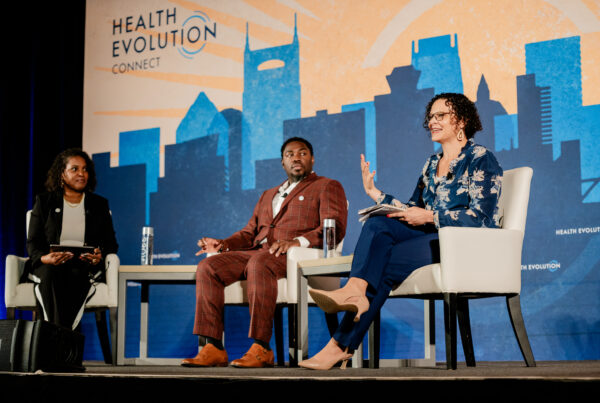Long before COVID-19, pundits, prognosticators and bona fide experts extolled the virtues of telemedicine and digital health to reach patients where they want to be met — the idea being that at some point in the future, half or more of care delivery services would be virtual. The remarkable expansion of the consumer electronics market and broadband connectivity have opened the proverbial virtual front door.
“As a nation, we hit 52 percent of outpatient visits conducted virtually in April. Now, that was a brief blip because of COVID but many of the organizations I have spoken with are still currently conducting 15 to 20 percent of visits virtually,” said Peter Antall, MD, Chief Medical Officer, Amwell.
Antall’s remarks came during a meeting of the Work Group on Reinventing Primary Care and Care Models, which is part of the Health Evolution Forum, a peer-to-peer convening of CEOs, policy makers and key thought leaders to drive near-term impact addressing a range of problems in the industry.
Indeed, the rapid increase in telehealth utilization during the pandemic has opened a virtual window into the vast possibilities for not just video visits, but a future state wherein providers embrace numerous alternatives to patient encounters outside traditional settings, including through remote patient monitoring and patient portals.
“What we’ve experienced during COVID-19 is very different from how telehealth can be built into a model to care for patients more effectively. Yes, there were a lot of video visits during COVID because that’s what we needed to do to take care of people and not have them neglecting conditions they needed to be treated for,” said Deb Rice-Johnson, President, Highmark, Inc. and Chief Growth Officer, Highmark Health. “But there’s more. It is thinking about when the best time is to see a patient in-person and when we need to follow-up to make sure they’re on the right path.”
Andrew Watson, MD, Vice President of Clinical Information Technology Transformation at UPMC, agreed with Rice-Johnson’s sentiment that the potential for telehealth is much broader than video visits.
“Remote patient monitoring plus artificial intelligence is the future. It’s of value to payers, in the primary care community, and in closing gaps in long-term care,” Watson said. “Combine that with payer claims and utilization management and we start to see a new predictive model to support a blended model of virtual and face-to-face primary care of the future.”
Everside Health President and COO Gaurov Dayal, MD, Co-Chair of the Work Group, asked the group when a 50-50 split between in person and virtual care is likely to be more common?
Watson said he envisions health care as a whole will be at 50-50 in three years when combining video visits and remote monitoring. Tia co-founder and Chief Operating Officer Felicity Yost said her organization achieved a 50-50 split and has stabilized there since June 2020, and Privia Health CEO Shawn Morris said it is in a similar range.
“All the major players are rolling out digital-only products and that’s going to push this forward so I think 40-50 percent virtual will come pretty easily in the next few years,” Morris said. “There will be more monitoring, remote diagnostics, there are going to be so many more tools than we all thought were possible that become a routine part of care.”
With so many new and emerging tools for providing care alternatives outside traditional clinical settings, the people, groups and systems that embrace those will ultimately succeed over those that do not by meeting consumer expectations. But health care leaders will be faced with a number of questions as they continue on that journey.
“The question is what needs to happen as we are looking to address a new paradigm of primary care? What should be offered and where should it be offered? How do we drive adoption and create continuity across options? How do we as leaders build seamless solutions? What are the federal solutions to this?” said Rebekah Gee, MD, CEO of Health Care Services for LSU Health and Co-Chair of the Work Group. “The answers to these questions will be the runway on which we land the plane of primary care for the future.”
Looking further into the future, Dayal also inquired about how much care will be virtual rather than physical in 10 years?
“In 10 years, we are going to be in a different paradigm altogether,” Antall said. “We’re not going to be talking about telehealth versus in-person. Care is going to be delivered in many, many touchpoints. Monitoring will be done by a belt, a ring on your finger, your pillow at night. Ten years is too far to even imagine where we’re going to be.”









